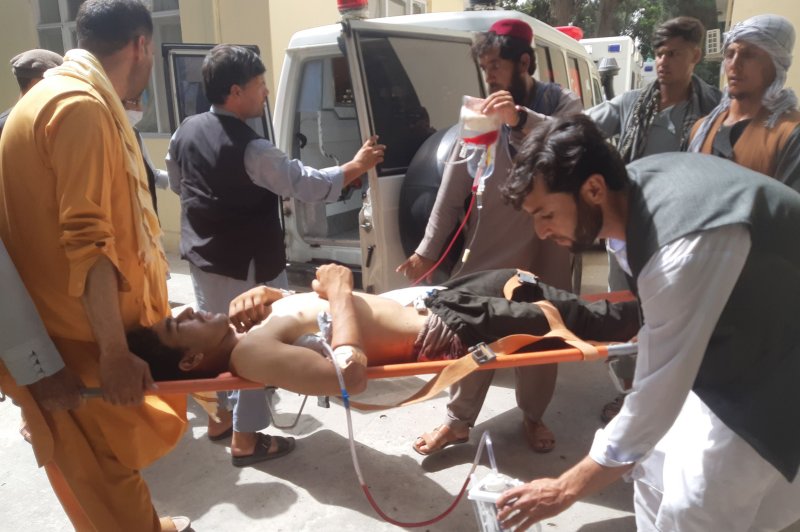Global criminal elites hit by 'unprecedented' AN0M sting with Canadian roots

About 1,000 people have been arrested worldwide, tons of drugs, hundreds of guns and tens of millions of dollars in cash and assets were seized, and multiple murders averted, authorities said.
There was a Canadian component, but while police in the United States, Europe, Australia, New Zealand, the Netherlands, Germany and Sweden crowed about the wild success of the innovative three-year honeypot sting, the RCMP would not say what the Canadian content was.
Arrests and seizures started Monday in Australia and New Zealand and announcements revealing the remarkable operation rolled across Europe and into the United States Tuesday.
“This was an unprecedented operation in terms of its massive scale, innovative strategy and technological and investigative achievement,” said Randy Grossman, Acting U.S. Attorney for the Southern District of California.
“Hardened encrypted devices usually provide an impenetrable shield against law enforcement surveillance and detection. The supreme irony here is that the very devices that these criminals were using to hide from law enforcement were actually beacons for law enforcement.”
The operation’s birth sprang from the death of a Canadian technology company.
Hi-tech sting leads to global crackdown on organized crime, over 800 detained
It started when a Vancouver company called Phantom Secure was hit by the FBI in 2018. The U.S. describe Phantom Secure as a provider of “secure communications to high-level drug traffickers and other criminal organization leaders.”
Phantom Secure was selling hardened encrypted devices, which are modified cell phones that maximize privacy and security to connect with others using a similar device with encrypted messages.
While there are many legitimate uses for encryption — sensitive business deals, investigative journalism, human rights work in dangerous jurisdictions, for example — few outside the criminal world will pay the premium
Another competitor, though, was in development, trying to build the “next generation” of underworld secrecy.
It was called AN0M.
One of those working to build AN0M was a veteran in the criminal use of secure devices. He previously distributed Phantom Secure and Sky Global handsets and invested heavily to create AN0M, but when facing charges on other matters, made authorities an offer they couldn’t refuse.
He offered his baby to the FBI to raise as its own.

Working with the Australian Federal Police investigators who cracked Phantom’s encryption, master keys to unlock the secret codes were built into the AN0M system. It placed a tiny bit of computer code into each message to allow investigators to gather, track, decrypt and store messages.
In essence, it sent a blind copy of every message to police.
Once the FBI got this new platform working, the cooperating source convinced some of his existing clients to sign up for it.
In October 2018, the source started offering the devices to three former Phantom Secure distributors to sell. They allegedly took on roles as administrators, recruiting new users to AN0M. A U.S. indictment alleges they are all linked to transnational crime groups and names them as Joseph Hakan Ayik, a Turkish citizen, Domenico Catanzariti, an Australian citizen, and Maximilian Rivkin, a Swedish citizen.
They unwittingly reached out to clients who had established reputations and criminal ties, which authorities say included outlaw bikers, Italian Mafia and drug lords.
AN0M’s marketing pitch was “designed by criminals for criminals.”
Some early adopters became “influencers” — making the new system trusted and trendy in the underworld. These were “well-known crime figures who wield significant influence,” according to court documents.
In Canada, AN0M cost approximately $1,700 for six months of service.
The FBI’s source, the one who turned over the AN0M business, has been working with the FBI since 2018 hoping for a lower sentence on charges he is facing. He has a prior conviction for drug importation and spent six years in prison.
While he helped promote AN0M, the FBI paid him $120,000 plus $59,508 in travel and living expenses, the FBI said.
Australian police did an early test run, with court authorized monitoring of 50 AN0M devices, giving officers a detailed view of some of Australia’s most sophisticated criminal organizations, police said.
“It grew organically based on word of mouth,” said FBI Special Agent Nicholas Cheviron, in a sworn affidavit.
By the summer of 2019, AN0M was gaining traction. Demand for devices was expanding beyond Australia. As the FBI was sending out devices, Australian police continued to monitor them.
The new legal ground this operation covers is reflected in the caution the FBI used. The United States was “geo-fenced,” meaning devices inside the U.S. were not monitored by U.S. authorities, but by the Australians, who only alerted the FBI in cases of an imminent threat to life.
In 2020, when it was revealed that EncroChat had been hacked by European authorities, and again in March, when Sky Global’s CEO was indicted in the United States, clients scrambled to join AN0M.

By the end of the operation, Suzanne Turner, Special Agent in charge of the FBI’s San Diego Field office, said there were about 12,000 AN0M devices in use, sending 27 million messages through 100 countries in 45 languages.
The top five countries for AN0M use were Germany, the Netherlands, Spain, Australia, and Serbia. There were active devices in Canada, the FBI said.
On Monday and Tuesday, authorities moved against a long list of targets in 16 countries.
About 800 arrests were being processed, including of six law enforcement officials caught working with criminals.
In Australia, the underworld damage was particularly harsh, with suspects arrested who are allegedly linked to “Australian-based Italian mafia, outlaw motorcycle gangs, Asian crime syndicate and Albanian organized crime.”
In the United States, 17 people were indicted, listed variously as distributors, administrators and underworld influencers for AN0M. They are citizens of eight countries. Six of them are Australian and four are Dutch. Eight were in custody as of midday Tuesday, the others remaining international fugitives.
It is uncertain what role Canada played to deserve its flag being on the FBI’s Operation Trojan Shield logo. The RCMP said the operation was “conducted in consultation with the RCMP.”
Police in Australia gave the RCMP credit for help in the early days of its part of the probe, called Operation Ironside.
“This operation demonstrates that law enforcement will not stop in our pursuit of criminal activity related to encrypted criminal communications,” the RCMP said in a written statement to National Post, but questions on specific roles, actions or results went unanswered.
It is possible the Canadian role remains secret, or equally possible there wasn’t much recent involvement to report.
As the sting was in full swing, someone figured out AN0M was fishy.
In March, a tech-savvy blogger examined an AN0M device. His curiosity was piqued by an alert AN0M sent to clients after the Sky Global breach, assuring them of AN0M’s safety. His conclusion was blunt: “STAY AWAY FROM ANOM IF YOU VALUE YOUR PRIVACY & SAFEY,” the blog concluded, misspelling “safety.”
“THEY ARE COMPROMISED, LIARS AND YOUR DATA IS RUNNING VIA USA.”
It is uncertain who paid attention to his warning, other than the FBI.
For years, a growing stable of criminal clientele had bought into the lie that AN0M phones were secure.
Officials were in awe of the trust criminals placed in it, dropping the coy and coded language typically used for explicit detail, about what was being shipped, to what address, and when, allowing police to intervene without revealing how they knew.
Police say an immense amount of data and information accrued during the lengthy probe is still being investigated.
“Countless spin-off operations will be carried out in the weeks to come,” according to Europol, the European Union’s police agency.
• Email: ahumphreys@postmedia.com | Twitter: AD_Humphreys














